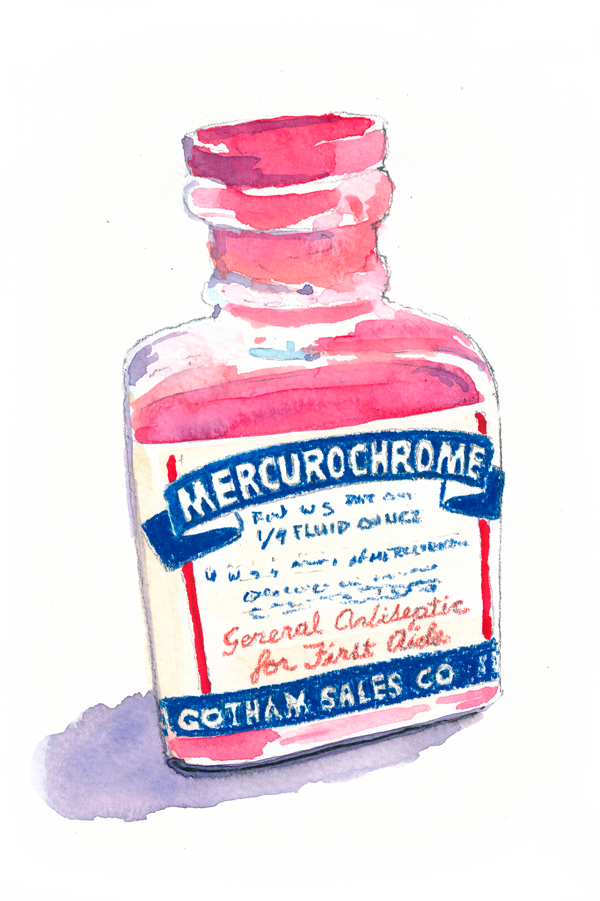Whatever happened to Mercurochrome?

ISSN-1059-6518
Volume 28 Number 1
By Paul MacMillan, AEMT
 I remember, as will many of us “of a certain age,” will also recall that stinging, staining, red dye in a small brown bottle that was applied liberally with a glass wand attached to its cap to all our scrapes and cuts. (The blogger Chesapeake Bay Woman descriped this procedure as “ a hot poker {used} to apply battery acid to the wound.” The red remained for days, a badge of honor for some; a source of humiliation for others. It was a matter of perspective. You were either daring or clumsy. As I grew older, I suddenly realized that Mercurochrome was no longer used. Upon investigation, I learned that it was no longer even sold.
I remember, as will many of us “of a certain age,” will also recall that stinging, staining, red dye in a small brown bottle that was applied liberally with a glass wand attached to its cap to all our scrapes and cuts. (The blogger Chesapeake Bay Woman descriped this procedure as “ a hot poker {used} to apply battery acid to the wound.” The red remained for days, a badge of honor for some; a source of humiliation for others. It was a matter of perspective. You were either daring or clumsy. As I grew older, I suddenly realized that Mercurochrome was no longer used. Upon investigation, I learned that it was no longer even sold.
Those of you under the age of 30 will have no recollection of this tincture. From its discovery in the early part of the 20th century as a treatment for urinary tract infections, Mercurochrome soon found its way into operating rooms as an antiseptic. Ultimately, the compound was produced commercially and became available to the general public who embraced it enthusiastically. Few households did not have this antiseptic in their medicine chests. Shortly after, a cousin, Merthiolate was introduced as an alternative, and it followed the same path as Mercurochrome.
So, what was the issue with Mercurochrome and Merthiolate? Mercurochrome or merbromin is a compound containing mercury and bromine while Merthiolate, a trade name for thimerosal, is a mixture of mercury and sodium. The percentage of mercury was very small; however its presence did raise concerns. These compounds work by killing much of the disease-causing bacteria by denaturing enzymes and other proteins to block the metabolism of the microbes through breaking the chemical bonds of the proteins.
